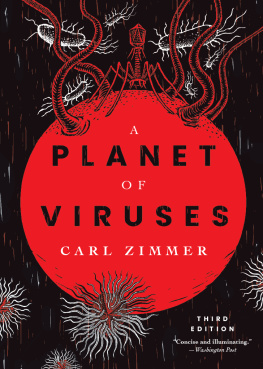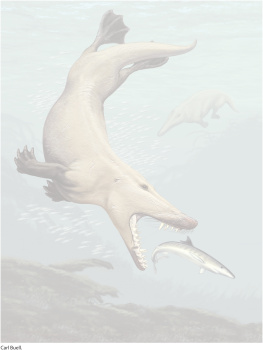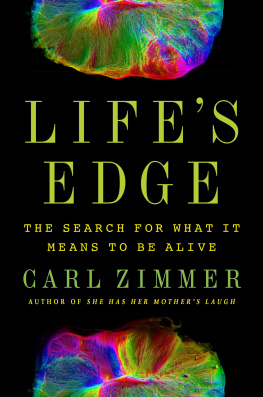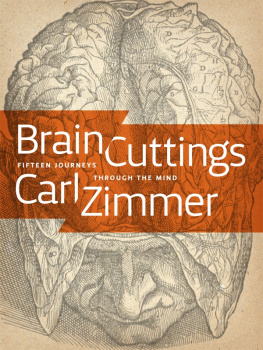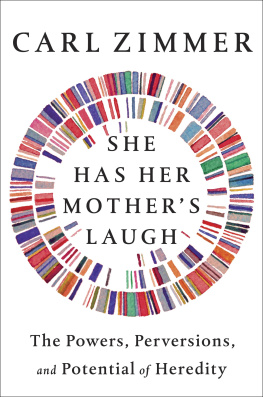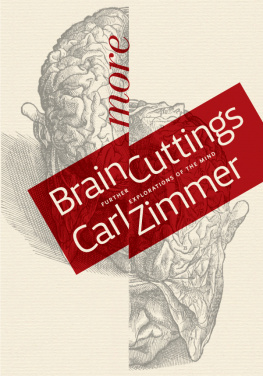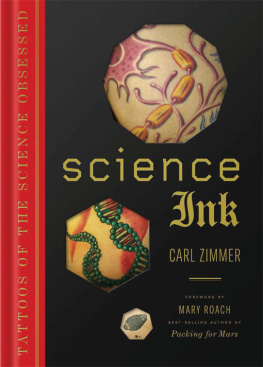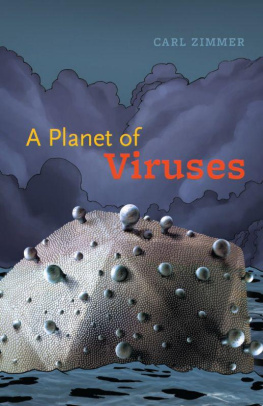Carl Zimmer - Microcosm: E. Coli and the New Science of Life (Vintage)
Here you can read online Carl Zimmer - Microcosm: E. Coli and the New Science of Life (Vintage) full text of the book (entire story) in english for free. Download pdf and epub, get meaning, cover and reviews about this ebook. year: 2009, publisher: Vintage, genre: Science. Description of the work, (preface) as well as reviews are available. Best literature library LitArk.com created for fans of good reading and offers a wide selection of genres:
Romance novel
Science fiction
Adventure
Detective
Science
History
Home and family
Prose
Art
Politics
Computer
Non-fiction
Religion
Business
Children
Humor
Choose a favorite category and find really read worthwhile books. Enjoy immersion in the world of imagination, feel the emotions of the characters or learn something new for yourself, make an fascinating discovery.

- Book:Microcosm: E. Coli and the New Science of Life (Vintage)
- Author:
- Publisher:Vintage
- Genre:
- Year:2009
- Rating:4 / 5
- Favourites:Add to favourites
- Your mark:
- 80
- 1
- 2
- 3
- 4
- 5
Microcosm: E. Coli and the New Science of Life (Vintage): summary, description and annotation
We offer to read an annotation, description, summary or preface (depends on what the author of the book "Microcosm: E. Coli and the New Science of Life (Vintage)" wrote himself). If you haven't found the necessary information about the book — write in the comments, we will try to find it.
Microcosm: E. Coli and the New Science of Life (Vintage) — read online for free the complete book (whole text) full work
Below is the text of the book, divided by pages. System saving the place of the last page read, allows you to conveniently read the book "Microcosm: E. Coli and the New Science of Life (Vintage)" online for free, without having to search again every time where you left off. Put a bookmark, and you can go to the page where you finished reading at any time.
Font size:
Interval:
Bookmark:
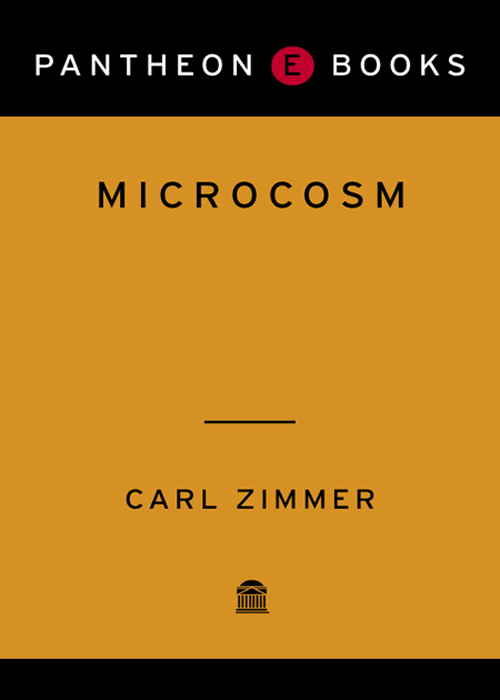
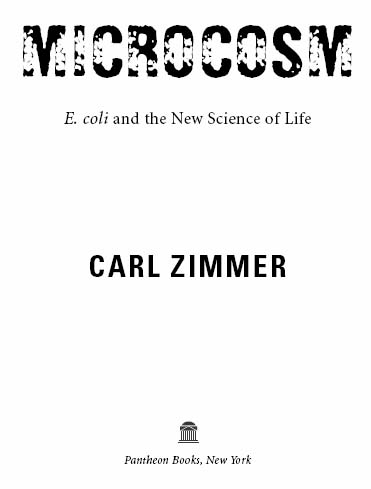
CONTENTS
TO VERONICA,
OUR LATEST LOVELY LIFE
One
SIGNATURE
 I GAZE OUT A WINDOW, a clear, puck-shaped box in my hand. Life fills my view: fescue and clover spreading out across the yard, rose of Sharon holding out leaves to catch sunlight and flowers to lure bumblebees. An orange cat lurks under a lilac bush, gazing up at an oblivious goldfinch. Snowy egrets and seagulls fly overhead. Stinkhorns and toadstools rudely surprise. All of these things have something in common with one another, something not found in rocks or rivers, in tugboats or thumbtacks. They live.
I GAZE OUT A WINDOW, a clear, puck-shaped box in my hand. Life fills my view: fescue and clover spreading out across the yard, rose of Sharon holding out leaves to catch sunlight and flowers to lure bumblebees. An orange cat lurks under a lilac bush, gazing up at an oblivious goldfinch. Snowy egrets and seagulls fly overhead. Stinkhorns and toadstools rudely surprise. All of these things have something in common with one another, something not found in rocks or rivers, in tugboats or thumbtacks. They live.
The fact that they live may be obvious, but what it means for them to be alive is not. How do all of the molecules in a snowy egret work together to keep it alive? Thats a good question, made all the better by the fact that scientists have decoded only a few snips of snowy egret DNA. Most other species on Earth are equally mysterious. We dont even know all that much about ourselves. We can now read the entire human genome, all 3.5 billion base pairs of DNA in which the recipe for Homo sapiens is written. Within this genetic tome, scientists have identified about 18,000 genes, each of which encodes proteins that build our bodies. And yet scientists have no idea what a third of those genes are for and only a faint understanding of most of the others. Our ignorance actually reaches far beyond protein-coding genes. They take up only about 2 percent of the human genome. The other 98 percent of our DNA is a barely explored wilderness.
Only a few species on the entire planet are exceptions to this rule. The biggest exception lives in the plastic box in my hand. The boxa petri dishlooks lifeless compared with the biological riot outside my window. A few beads of water cling to the underside of the lid. On the bottom is a layer of agar, a firm gray goo made from dead algae and infused with sugar and other compounds. On top of the agar lies a trail of pale gold spots, a pointillistic flourish. Each of those spots is made up of millions of bacteria. They belong to a species that scientists have studied intensely for a century, that they understand better than almost any other species on the planet. Ive made this species my guidean oracle that can speak of the difference between life and lifeless matter, of the rules that govern all living things: bacteria, snowy egret, and curious human. I turn over the dish. On the bottom is a piece of tape labeled E. coli K-12 (P1 strain).
I got my dish of Escherichia coli on a visit to Osborne Memorial Laboratories, a fortress of a building on the campus of Yale University. On the third floor is a laboratory filled with nose-turning incubators and murky flasks. A graduate student named Nadia Morales put on purple gloves and set two petri dishes on a lab bench. One was sterile, and the other contained a cloudy mush rich with E. coli. She picked up a loopa curled wire on a plastic handleand stuck it in the flame of a Bunsen burner. The loop glowed orange. She moved it away from the flame, and after it cooled down she dipped it into the mush. Opening the empty dish, Morales smeared a dollop across the sterile agar as if she were signing it. She snapped the lid on the second dish and taped it shut.
Youll probably start seeing colonies tomorrow, she said, handing it to me. In a few days it will get stinky.
It was as if Morales had given me the philosophers stone. The lifeless agar in my petri dish began to rage with new chemistry. Old molecules snapped apart and were forged together into new ones. Oxygen molecules disappeared from the air in the dish, and carbon dioxide and beads of water were created. Life had taken hold. If I had microscopes for eyes, I could have watched the hundreds of E. coli Morales had given me as they wandered, fed, and grew. Each one is shaped like a microscopic submarine, enshrouded by fatty, sugary membranes. It trails propeller-like tails that spin hundreds of times a second. It is packed with tens of millions of molecules, jostling and cooperating to make the microbe grow. Once it grows long enough, it splits cleanly in two. Splitting again and again, it gives rise to a miniature dynasty. When these dynasties grow large enough, they become visible as golden spots. And together the spots reveal the path of Moraless living signature.
E. coli may seem like an odd choice as a guide to life if the only place youve heard about it is in news reports of food poisoning. There are certainly some deadly strains in its ranks. But most E. coli are harmless. Billions of them live peacefully in my intestines, billions more in yours, and many others in just about every warm-blooded animal on Earth. All told, there are around 100 billion billion E. coli on Earth. They live in rivers and lakes, forests and backyards. And they also live in thousands of laboratories, nurtured in yeasty flasks and smeared across petri dishes.
In the early twentieth century, scientists began to study harmless strains of E. coli to understand the nature of life. Some of them marched to Stockholm in the late 1900s to pick up Nobel Prizes for their work. Later generations of scientists probed even further into E. colis existence, carefully studying most of its 4,000-odd genes and discovering more rules to life. In E. coli, we can begin to see how genes must work together to sustain life, how life can defy the universes penchant for disorder and chaos. As a single-celled microbe, E. coli may not seem to have much in common with a complicated species like our own. But scientists keep finding more parallels between its life and ours. Like us, E. coli must live alongside other members of its species, in cooperation, conflict, and conversation. And like us, E. coli is the product of evolution. Scientists can now observe E. coli as it evolves, mutation by mutation. And in E. coli, scientists can see an ancient history we also share, a history that includes the origin of complex features in cells, the common ancestor of all living things, a world before DNA. E. coli can not only tell us about our own deep history but can also reveal things about the evolutionary pressures that shape some of the most important features of our existence today, from altruism to death.
Through E. coli we can see the history of life, and we can see its future as well. In the 1970s, scientists first began to engineer living things, and the things they chose were E. coli. Today they are manipulating E. coli in even more drastic ways, stretching the boundaries of what we call life. With the knowledge gained from E. coli, genetic engineers now transform corn, pigs, and fish. It may not be long before they set to work on humans. E. coli led the way.
I hold the petri dish up to the window. I can see the trees and flowers through its agar gauze. Each spot of the golden signature refracts their image. I look at life through a lens made of E. coli.
Two
E. COLI AND THE ELEPHANT
LUXURIOUS GROWTH
 ESCHERICHIA COLI HAS LURKED WITHIN our ancestors for millions of years, before our ancestors were even human. It was not until 1885 that our species was formally introduced to its lodger. A German pediatrician named Theodor Escherich was isolating bacteria from the diapers of healthy babies when he noticed a rod-shaped microbe that could produce, in his words, a massive, luxurious growth. It thrived on all manner of foodmilk, potatoes, blood.
ESCHERICHIA COLI HAS LURKED WITHIN our ancestors for millions of years, before our ancestors were even human. It was not until 1885 that our species was formally introduced to its lodger. A German pediatrician named Theodor Escherich was isolating bacteria from the diapers of healthy babies when he noticed a rod-shaped microbe that could produce, in his words, a massive, luxurious growth. It thrived on all manner of foodmilk, potatoes, blood.
Font size:
Interval:
Bookmark:
Similar books «Microcosm: E. Coli and the New Science of Life (Vintage)»
Look at similar books to Microcosm: E. Coli and the New Science of Life (Vintage). We have selected literature similar in name and meaning in the hope of providing readers with more options to find new, interesting, not yet read works.
Discussion, reviews of the book Microcosm: E. Coli and the New Science of Life (Vintage) and just readers' own opinions. Leave your comments, write what you think about the work, its meaning or the main characters. Specify what exactly you liked and what you didn't like, and why you think so.

